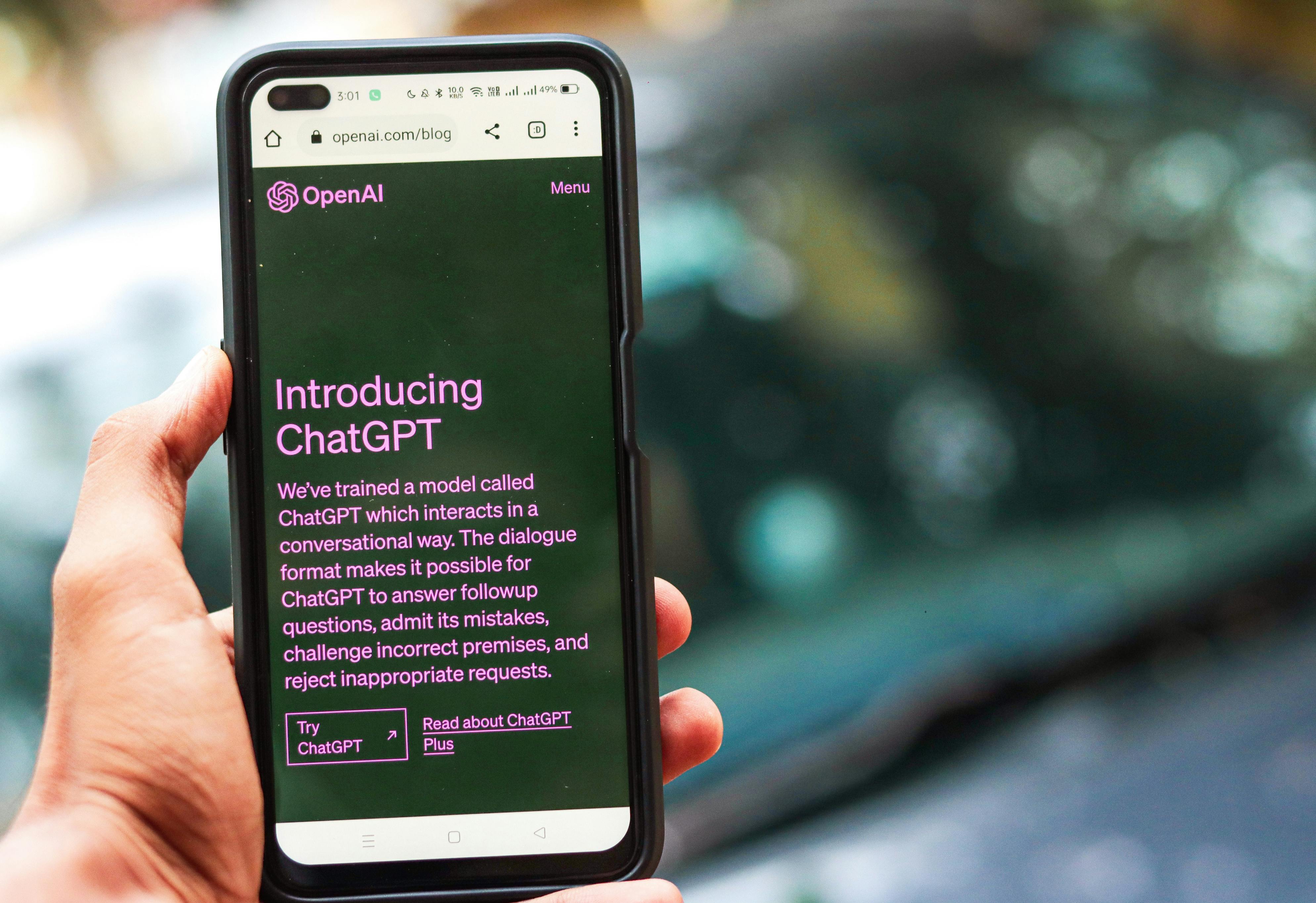
The Ins and Outs of Traffic Bots: Unleashing the Power of Automation
Traffic bots, often referred to as web robots or web crawlers, are computer programs designed to mimic human behavior on the internet. They act as automated agents, visiting websites and interacting with them in various ways. These bots are created for a multitude of purposes, serving both beneficial and malicious intentions.
Initially invented to facilitate web indexing by search engines, traffic bots still play a crucial role in automatically collecting information from websites. These benign bots help search engines crawl and index web pages more efficiently, enabling users to find relevant information quickly.
Moreover, traffic bots are also employed by website owners and marketers to monitor website stats, analyze user behavior, and ensure website functionalities. Through these bots, they gather valuable data such as page views, visitor geographical locations, click-through rates, and time spent on specific pages. The insights gained from such data assist in improving user experience and optimizing websites accordingly.
While legitimate traffic bots contribute positively to online operations, some unscrupulous actors utilize them for less commendable purposes. Malicious traffic bots can be developed to generate fraudulent ad impressions, artificially inflate website traffic statistics, or sabotage competitors' websites by flooding them with fake visitors. These malicious actions can cause financial harm and tarnish reputations.
Additionally, spam bots represent another subcategory of malicious traffic bots that may exploit websites by leaving fake comments or sending unsolicited messages. These actions not only have severe consequences on user experience but also undermine the integrity and authenticity of online interactions.
To counter the negative impact of malicious traffic bots on websites, various techniques such as CAPTCHAs (Completely Automated Public Turing test(s) to tell Computers and Humans Apart) are implemented. These tests distinguish between human users and automated bots by requiring users to solve challenges that are easy for people but difficult for machines.
Identifying and categorizing traffic bots involves advanced algorithms that analyze patterns of activities performed by the bots. Through this analysis, it becomes easier to differentiate between genuine human visitors and automated bots, allowing web administrators to filter out undesirable bot traffic.
In conclusion, understanding traffic bots is essential in distinguishing between their beneficial applications and malicious intents. Primarily used for web indexing and data collection, traffic bots provide valuable insights to improve website functionality. However, malicious traffic bots negatively impact online businesses by engaging in various forms of fraud. By implementing protective measures and detection mechanisms, the detrimental impact of such malicious bots can be minimized, ensuring a safer and more reliable internet environment.
 How Traffic Bots Can Automate Your SEO Strategytraffic bots are software programs designed to generate automated traffic to a website, thereby helping boost its search engine optimization (SEO) strategy. By mimicking real user behavior, these bots can provide an illusion of increased traffic and engagement on a website.
How Traffic Bots Can Automate Your SEO Strategytraffic bots are software programs designed to generate automated traffic to a website, thereby helping boost its search engine optimization (SEO) strategy. By mimicking real user behavior, these bots can provide an illusion of increased traffic and engagement on a website.One key advantage of using traffic bots is that they are capable of generating a significant amount of traffic in a short period. This can be beneficial for websites looking to improve their SEO rankings quickly. The influx of traffic can help increase the website's visibility and potentially attract more organic visitors over time.
Traffic bots are often equipped with functionalities that simulate human interaction, including browsing through pages, clicking on links, and spending a specified amount of time on specific webpages. These actions aim to make the traffic look as natural as possible, reducing the risk of detection by search engines.
Another way traffic bots automate SEO strategies is by providing geo-targeted traffic. Some advanced traffic bots allow users to specify the countries or regions from which they want the traffic to originate. This type of targeted traffic can be especially useful if a website aims to attract visitors from specific locations or target local markets.
Moreover, traffic bots can analyze and optimize valuable metrics that search engines use to rank websites. By providing substantial views, interactions, and time spent on-site, bots help improve these metrics, ultimately enhancing the website's overall SEO efforts.
Despite the potential benefits, it is crucial to note that using traffic bots for SEO automation requires caution. Search engines continuously refine their algorithms to detect and penalize websites that rely heavily on artificial means to manipulate rankings. Overreliance on traffic-generated bots may lead to penalties or even having the website delisted from search engine results.
To effectively automate an SEO strategy using traffic bots, one must strike a balance between generating quality organic traffic and utilizing automated tools for optimization. It is crucial to complement bot-generated traffic with genuine backlinks, high-quality content creation, and analytical data interpretation. Additionally, regular monitoring of website performance metrics and adaptability to algorithm updates remain critical to a successful SEO strategy.
In conclusion, traffic bots can be useful for automating certain aspects of an SEO strategy, primarily by providing traffic that simulates human behavior. However, caution must be exercised to avoid violating search engine guidelines, leading to penalties or delisting. A holistic approach that combines bot-generated traffic with genuine online efforts and data analysis remains key to achieving long-term SEO success.
 The Risks and Rewards of Using Traffic BotsUsing traffic bots can offer both advantages and risks for website owners. These automated software tools mimic human behavior by generating artificial traffic to a website, influencing its visitor count and engagement metrics. However, it's crucial to understand the potential risks and rewards associated with employing traffic bots.
The Risks and Rewards of Using Traffic BotsUsing traffic bots can offer both advantages and risks for website owners. These automated software tools mimic human behavior by generating artificial traffic to a website, influencing its visitor count and engagement metrics. However, it's crucial to understand the potential risks and rewards associated with employing traffic bots.Risks:
1. Violation of terms and policies: The majority of online platforms explicitly prohibit the use of traffic bots due to their potential to manipulate results and deceive advertisers. Engaging in such practices can result in severe consequences, including temporary or permanent suspension from advertising networks or even legal liabilities.
2. Damage to reputation: If exposed, using traffic bots can damage a website's credibility, trustworthiness, and reputation. Users may perceive the artificially generated traffic as irrelevant or suspicious, leading to a loss of customer confidence.
3. Adverse impact on SEO: Search engine algorithms are devised to identify real user interactions and disregard artificially-generated traffic. If search engines detect traffic bot activity, websites may face detrimental consequences like lowered search rankings, reduced organic traffic, or complete removal from search results.
4. Missed analytics insights: Traffic bots flood websites with automated page views and interactions, making it difficult for website owners to accurately analyze user behavior and gather meaningful insights that can help improve the site's performance. Precise analytics is crucial for effective decision-making, content optimization, and marketing strategies.
Rewards:
1. Enhancing perceived popularity: Increased traffic numbers can create an appearance of popularity, potentially attracting real visitors who are more likely to explore the site based on the presumption that others find it valuable.
2. Improved monetization prospects: For sites reliant on advertising revenue or sponsorships, higher visitor counts resulting from traffic bots might demonstrate increased value to potential advertisers. This perception could lead to higher bid prices for ad space.
3. Initial traction: In some cases, new websites may benefit from initial traffic boosts provided by bots as they struggle to gain visibility in highly competitive online environments. A surge in early traffic can help kickstart user engagement and foster organic growth.
4. A/B testing and load simulation: Traffic bots can be utilized to simulate various conditions, allowing website owners to understand how their pages perform under different loads or during A/B tests. This enables effective server optimization and enhanced user experience.
5. E-commerce inventory depletion detection: For e-commerce platforms, high bot activity on particular products or services may indicate potential fraud attempts aimed at depleting inventory swiftly. Identifying these patterns allows precautions to prevent significant monetary loss.
In conclusion, while employing traffic bots may seem appealing due to the supposed rewards they offer, it is important to carefully consider the associated risks. Violating guidelines set by platform policies, reputational damage, negative SEO impact, missed analytics insights, are serious concerns that should outweigh the potential benefits gained in artificially boosting traffic numbers. Transparency, authenticity, and focusing on providing quality content remain key to sustained success in any online venture.
 Different Types of Traffic Bots: From Benign to Malicioustraffic bots are increasingly being used on the internet, serving various purposes, and can range from benign to malicious. Let's explore different types of traffic bots that exist today.
Different Types of Traffic Bots: From Benign to Malicioustraffic bots are increasingly being used on the internet, serving various purposes, and can range from benign to malicious. Let's explore different types of traffic bots that exist today.Benign Bots:
1. Search Engine Crawlers: These bots, employed by search engines like Google or Bing, browse websites to index and categorize information, ensuring relevant search results for users.
2. Monitor Bots: Used by website owners to monitor site performance and collect data on things like uptime, load times, and broken links. They provide valuable insights into website health.
3. Feed Aggregators: These bots gather and organize data from multiple sources into a single feed. News aggregators, for example, extract headlines or snippets from various news sites and consolidate them for readers.
4. Translation Bots: Primarily used to offer instant translations of web pages or parts of content, translation bots facilitate cross-language communication, helping internet users around the globe.
Questionable Bots:
1. Web Scrapers: Automate data extraction from websites, which can have legitimate applications (e.g., price comparisons), but some may be used for unauthorized data harvesting or copyright infringement.
2. Monitoring Competitor Websites: These bots constantly observe competitor websites to track changes in content or prices. While this type is useful for businesses to stay competitive, excessively aggressive crawlers can cause strain on target sites.
3. Click Fraud Bots: A dubious form of traffic bot where automated programs simulate clicks on online advertisements to deceive advertisers in pay-per-click models, aiming to falsely inflate costs or illegitimately obtain revenue.
Malicious Bots:
1. Distributed Denial of Service (DDoS) Bots: With an intention to disrupt targeted systems, these powerful bots generate massive amounts of fake traffic, overwhelming servers until they fail to handle genuine user requests.
2. Credential Stuffing Bots: Attackers use these bots to systematically test stolen username and password combinations across multiple websites, exploiting the human tendency to reuse credentials. Successful logins enable unauthorized access to accounts and sensitive information.
3. Spam Bots: These bots inundate forums, comments sections, or messaging platforms with unwanted promotional or harmful messages, aiming to sell products, spread malware or gather personal data.
Understanding the different types of traffic bots is crucial for online users, website owners, and businesses. While benign bots perform valuable tasks like indexing, monitoring, or translation, questionable and malicious bots pose varying degrees of risk and damage. It's essential to stay vigilant and employ safeguards against the unwanted impacts that these bots can have on the internet ecosystem.
 Setting Up a Traffic Bot the Right Way—A Step-by-Step GuideSetting Up a traffic bot the Right Way—A Step-by-Step Guide
Setting Up a Traffic Bot the Right Way—A Step-by-Step GuideSetting Up a traffic bot the Right Way—A Step-by-Step GuideTo effectively set up a traffic bot, there are several key steps you need to follow. Below is a comprehensive guide that walks you through each stage, ensuring you optimize your traffic bot setup correctly.
1. Define Your Goals:
Before diving into setting up a traffic bot, it's crucial to be clear about your goals and objectives. Identify what you aim to accomplish by using the traffic bot—whether it's generating website traffic, improving conversion rates, or increasing brand visibility.
2. Choose the Appropriate Traffic Bot:
There are various types of traffic bots available in the market, including free as well as paid options. Research and select the one that meets your specific requirements in terms of features, authenticity, safe usage practices, and good customer reviews.
3. Set Up and Configure the Proxy Server:
When using traffic bots, it's important to employ proxy servers to avoid detection as suspicious traffic activity. Set up a reliable proxy server and configure it properly according to the instructions provided by your chosen traffic bot provider.
4. Customizing Bot Actions:
Determine what actions you want the bot to perform on your website to generate traffic such as browsing pages, searching keywords, or submitting forms. Understand your website's structure and user flow, then customize these actions accordingly within the traffic bot settings.
5. Mimic Human Behavior:
To prevent getting flagged as a bot, make sure your bot configuration accurately replicates human behavior. Vary time intervals between actions and simulate realistic browsing patterns to make the generated traffic appear organic.
6. Utilize Targeting Settings:
Most advanced traffic bots come with targeting settings that allow you to narrow down your audience based on demographics or geographical location. Segmenting your traffic can help ensure that visitors are more likely to engage with your content and increase conversions.
7. Analyze Performance Metrics:
Regularly monitor and analyze the performance metrics provided by your traffic bot. Keep an eye on metrics such as session duration, bounce rate, and click-through rate to assess the success of your bot setup. This will help you make necessary adjustments and improvements for better results.
8. Refine and Optimize:
Traffic bot setups require continuous refinement to ensure optimal performance. Pay attention to data generated from analytics tools and make necessary adjustments to targeting settings, action patterns, or other variables based on your analysis.
9. Follow Legal and Ethical Guidelines:
When using traffic bots, it's essential to adhere to legal and ethical guidelines defined by your country's laws as well as various online platforms. Avoid engaging in activities that may breach terms of service, spam regulations, or harm others in any way.
10. Stay Updated:
The world of traffic bots is ever-evolving. To ensure your traffic bot setup remains effective and safe, allocate time for staying updated with the latest trends, news, and advancements in traffic generation techniques.
By following this step-by-step guide, you can successfully set up a traffic bot that aligns with your goals while maintaining good practices and adhering to ethical standards. Remember, consistent monitoring and refinements are needed throughout the process in order to achieve optimal results.
 Enhancing Website Performance with the Help of Traffic BotsHaving a well-performing website is crucial for attracting visitors and achieving your online goals. One increasingly popular method to enhance website performance is by utilizing traffic bots. Traffic bots, as AI-powered tools, simulate human visitor behavior, generating automated web traffic to your site.
Enhancing Website Performance with the Help of Traffic BotsHaving a well-performing website is crucial for attracting visitors and achieving your online goals. One increasingly popular method to enhance website performance is by utilizing traffic bots. Traffic bots, as AI-powered tools, simulate human visitor behavior, generating automated web traffic to your site.Traffic bots offer several benefits in terms of enhancing website performance. Firstly, their ability to generate consistent traffic can help boost your website's search engine rankings. More website traffic improves your search visibility and increases the chances of getting organic visitors from the search results.
These bots can also contribute to improving your website's overall user experience. By simulating human behavior like clicking on different pages, mimicking scroll patterns, and interacting with elements on your website, they provide valuable data on user engagement. Analyzing this data can help you understand how real users navigate through your site and identify areas that need improvement. This knowledge allows you to make informed decisions to optimize your website's performance.
Additionally, traffic bots are particularly useful for handling tasks that could be time-consuming or monotonous for humans. They can conduct various repetitive actions like filling out forms or testing specific features on your website. This automation saves time, streamlines processes, and enables you and your team to focus on other essential tasks like content creation or innovation.
Furthermore, traffic bots are effective in stress testing your website's infrastructure and server capacity. By generating significant amounts of traffic simultaneously, these bots help you evaluate how well your website handles the load. This information allows you to make necessary optimizations to improve your site’s speed and performance under high traffic situations.
Nevertheless, it is essential to remember that while traffic bots can provide benefits in enhancing website performance, they should be used wisely and ethically. Excessive or malicious use of traffic bots may violate the terms of service of various platforms or search engines. Always ensure compliance with regulations and guidelines when utilizing these tools.
In conclusion, traffic bots serve as valuable tools in enhancing website performance by increasing traffic, improving user experience, automating repetitive tasks, and stress testing. Leveraging their capabilities intelligently and responsibly can aid businesses in achieving better search rankings, user engagement, and overall website success.
 Deciphering Legit Traffic from Bot Traffic: Tools and TechniquesDeciphering Legit traffic bot from Bot Traffic: Tools and Techniques
Deciphering Legit Traffic from Bot Traffic: Tools and TechniquesDeciphering Legit traffic bot from Bot Traffic: Tools and TechniquesIn today's digital landscape, web traffic plays a crucial role in determining the success of online platforms. However, not all traffic is created equal. Bots, automated software programs that send requests to websites, can skew analytics data, hampering accurate analysis and decision-making processes. To mitigate the impact of bot traffic, various tools and techniques can help differentiate between genuine user engagement and automated bot activity.
One prevalent challenge in distinguishing real users from bots lies in the fact that cybercriminals continually evolve their methods to resemble human behavior. Thankfully, many innovative solutions have emerged to tackle this issue. Here are some tools and techniques commonly utilized:
1. Captchas: One basic approach is to employ CAPTCHAs (Completely Automated Public Turing tests to tell Computers and Humans Apart), which require users to complete a specific task or visually verify certain characters. Legitimate users tend to handle this task with ease, while most bots struggle due to their lack of cognitive abilities.
2. User-Agent Analysis: Analyzing user-agent strings can provide insights into the type of device, operating system, and browser used by web visitors. By examining specific patterns associated with bot user-agents or known malicious behaviors, it becomes easier to categorize traffic accordingly.
3. IP Address Filtering: Filtering requests based on source IP addresses helps identify suspicious activities originating from known bot IPs or suspicious geolocations. Organizations can maintain updated lists of blacklisted IPs, block TOR exit node IPs, or use trusted IP reputation services for effective filtering.
4. Behavioral Analytics: This method involves analyzing user behavior on websites using complex algorithms and machine learning techniques to detect anomalies distinctive of bot interactions. Abnormal patterns might include excessive page views within a short duration or high-speed navigation between pages, triggering flagging mechanisms.
5. Device Fingerprinting: This technique ensures that each user's device has a unique digital fingerprint. By tracking and comparing these fingerprints, organizations can differentiate between individual users and bots, effectively distinguishing real traffic from automated requests.
6. Mouse Movement Analysis: Real users generally exhibit natural patterns of mouse movement while interacting with web pages. Analyzing mouse movement behavior can help flag or filter out bot traffic, which often showcases mechanical, linear movements devoid of common characteristics exhibited by human users.
7. Time-Based Anomalies: Monitoring traffic patterns over time enables the identification of irregularities in website access, such as excessive requests during short intervals or consistent activity throughout specific periods. Such anomalies are often indicative of bot traffic.
8. Threat Intelligence Feeds: Subscribing to commercially available threat intelligence feeds provides extensive bot detection capabilities. These feeds continuously update with new information related to existing and emerging bot networks and techniques used by cybercriminals, aiding in the accurate identification and classification of bot traffic.
By combining multiple tools and techniques, websites and online platforms can make informed decisions based on more reliable analytics. Keep in mind that the evolving nature of bot tactics requires continuous adaptation and vigilance. Regularly monitoring traffic patterns and staying informed about the latest advancements will ensure better protection against harmful bots and reliable traffic analysis.
 Ethical Considerations in Implementing Traffic BotsEthical considerations play a crucial role when implementing traffic bots. These automated systems that simulate human behavior on websites can raise ethical concerns if used improperly. Let's discuss several key aspects to consider:
Ethical Considerations in Implementing Traffic BotsEthical considerations play a crucial role when implementing traffic bots. These automated systems that simulate human behavior on websites can raise ethical concerns if used improperly. Let's discuss several key aspects to consider:Transparency and Disclosure: The use of traffic bots should be transparent and clearly disclosed to the website visitors, users, or stakeholders. It is inappropriate to engage in deceptive practices by misrepresenting the actions carried out by these bots. Transparency ensures that everyone involved understands the presence and purpose of these automated tools.
Integrity and Legality: Traffic bots should be implemented with integrity and within the framework of legal regulations. Engaging in activities that could harm websites, violate terms of service, or manipulate rankings in an unjust manner is unethical. Bots should adhere to the website's rules and policies while maintaining legal and ethical standards.
Protection of User Privacy: Maintaining user privacy is paramount. When implementing traffic bots, it is important to ensure no personally identifiable information (PII) is collected or compromised. Respecting the privacy rights and preferences of the users being served by the bots is fundamental.
Fairness: Traffic bots should not engage in actions that create an unfair advantage for certain websites or artificially manipulate statistics such as page views or click-through rates. Even if there are legitimate reasons for using bots such as load testing or automated monitoring, fairness should always be considered.
Defending Against Negative Consequences: Traffic bots can inadvertently generate negative consequences for websites, servers, or networks due to increased traffic and server loads. Implementers must take precautions to prevent any potential harm caused by excessive bot activity or implement mechanisms to scale back when necessary.
Avoidance of Malicious Use: Ethical considerations involve refraining from using traffic bots for malicious purposes like spreading malware, conducting DDoS attacks, or engaging in fraud. Bot developers and operators need to employ measures to prevent their bots from being exploited or falling into malicious hands.
Regulatory Compliance: Beyond legality, traffic bots should comply with relevant regulations to ensure ethically sound practices. Adhering to laws related to data protection, spam, online advertising, and user consent is essential when using these tools.
Continuous Monitoring and Accountability: Regularly monitoring traffic bots' activities is necessary to detect and address any unintentional or unethical behavior. Establishing accountability for their implementation and assessing their impact remains an ongoing commitment.
Ethical behavior should govern the usage of traffic bots to maintain the trust and integrity of the online ecosystem. By prioritizing transparency, adhering to legal boundaries, and aiming for fairness, these automated systems can be responsibly used to achieve legitimate goals without compromising ethical standards.
 Navigating the Legal Landscape of Using Traffic BotsWhen it comes to using traffic bots, navigating the legal landscape can be a complicated matter. It is important to understand the legal implications and potential consequences before utilizing such tools. Here are some factors you should consider:
Navigating the Legal Landscape of Using Traffic BotsWhen it comes to using traffic bots, navigating the legal landscape can be a complicated matter. It is important to understand the legal implications and potential consequences before utilizing such tools. Here are some factors you should consider:1. Intellectual Property Rights:
Using traffic bots to imitate or replicate real users visiting websites without proper permissions could potentially infringe on intellectual property rights. Make sure you have explicit authorization from the website owners to avoid legal issues.
2. Bot Activity Laws:
Different countries may have laws regulating bot activities that you need to be aware of. Running traffic bots without adhering to these laws can lead to legal trouble. Familiarize yourself with relevant legislations and regulations in your jurisdiction.
3. Terms of Service Violations:
Many websites have specific terms of service (ToS) that prohibit the use of bots or automated scripts. If you disregard these ToS agreements, you risk breaching legally binding contracts and may face consequences such as account suspensions, terminations, or even legal actions.
4. Misrepresentation or Fraudulent Behavior:
Using traffic bots to manipulate user metrics or engage in fraudulent activities such as click fraud is illegal and unethical. Engaging in such behavior can result in criminal charges like fraud, identity theft, or conspiracy.
5. Privacy Violation:
Traffic bots that collect personal information or deceive users by extracting sensitive data can lead to significant privacy concerns. Violating privacy laws, data protection regulations, or user consent can attract severe penalties.
6. Consumer Protection:
If your use of traffic bots misleads consumers or tricks them into making purchases under false pretenses, it may violate consumer protection laws. Ensure that your bot usage won't deceive customers or infringe upon their rights.
7. Anti-Competitive Behavior:
Using traffic bots with the intention of gaining unfair advantage over competitors violates antitrust laws and can result in severe penalties and legal repercussions. Avoid engaging in anti-competitive practices that harm other businesses.
8. Liability and Accountability:
Remember that you are responsible for the actions conducted by the traffic bots you deploy. If your bots inadvertently cause harm, damage systems, or disrupt legitimate users, you may be held liable for any negative consequences. Consult legal advice to understand your potential liability.
9. Data Protection and Privacy Laws:
Ensure that your usage of traffic bots complies with data protection and privacy laws. Collecting or processing personal information without adhering to these regulations can land you in legal trouble and may result in significant penalties.
Given the complexity of the legal landscape surrounding traffic bot usage, seeking legal counsel familiar with jurisdiction-specific laws and regulations is highly recommended before engaging in any activities involving these tools.
 Real-Life Success Stories: The Impact of Traffic Bots on BusinessesReal-Life Success Stories: The Impact of traffic bots on Businesses
Real-Life Success Stories: The Impact of Traffic Bots on BusinessesReal-Life Success Stories: The Impact of traffic bots on BusinessesTraffic bots have revolutionized the way businesses drive traffic to their websites, generating significant success stories across various industries. These automated tools, designed to simulate human activity, play a pivotal role in enhancing online visibility and attracting potential customers. Let's delve into some real-life success stories highlighting the profound impact traffic bots have had on businesses.
Leveraging traffic bots has assisted several startups in establishing a strong online presence while overcoming the initial struggles of limited resources. Such companies witnessed substantial growth with increased website traffic, ultimately leading to enhanced brand recognition and customer acquisition. By automating the process of generating traffic, these startups could efficiently showcase their products or services to a wider audience.
E-commerce platforms, in particular, have reaped significant benefits from traffic bot usage. These platforms rely heavily on web traffic to drive sales, making them an ideal case study for how traffic bots can positively impact business performance. By systematically simulating user activity and increasing organic traffic, e-commerce sites experience improved conversion rates and higher revenue streams. Real-time analytics provided by these bots offer valuable insights that enable organizations to make data-driven decisions, resulting in increased competitiveness.
Numerous online businesses have also witnessed remarkable growth in organic search rankings through comprehensive SEO (Search Engine Optimization) strategies involving traffic bots. By directing specific keywords to websites or social media accounts through bot-generated searches, businesses have witnessed a boost in search engine rankings and click-through rates. This increase not only fosters better discoverability but also enhances credibility within the market niche.
Another noteworthy success story lies in influencer marketing. Utilizing traffic bots to amplify engagement metrics such as likes, comments, and followers has helped influencer accounts gain credibility among their target audiences and potential brand collaborations. Brands associating with such influencers notice a surge in relevant website traffic and overall customer engagement.
Furthermore, targeted marketing campaigns can greatly benefit from traffic bot implementation. By positioning their products or services to reach a specific audience, businesses witness higher conversion rates and increased sales figures. Understanding the customer's behavior patterns and tailoring marketing efforts accordingly becomes easier with the insights derived from traffic bots.
While traffic bots have their share of success stories, ethical concerns exist parallelly. Misuse of traffic bots can artificially inflate metrics without delivering genuinely interested customers, which can ultimately harm reputation and user trust. Hence, responsible usage emphasizing quality over quantity is crucial to lasting business success.
In conclusion, real-life success stories explore the immense impact traffic bots can have on businesses across diverse industries. From attracting customers and enhancing brand awareness to improving online visibility and increasing sales figures, traffic bots enable companies to flourish in the competitive digital landscape. These powerful tools open avenues for growth by supplementing targeted marketing efforts, boosting search engine rankings, and refining influencer strategies. When implemented ethically and responsibly, traffic bots can be valuable assets in driving long-term successes for businesses aspiring to thrive online.
 Advanced Features of Modern Traffic Bots You Should Know AboutThe world of website traffic bots has significantly evolved in recent years, introducing advanced features that every user should be aware of. These modern traffic bots come equipped with a range of functionalities designed to optimize website traffic and improve overall performance. Here are some key advanced features you should know about:
Advanced Features of Modern Traffic Bots You Should Know AboutThe world of website traffic bots has significantly evolved in recent years, introducing advanced features that every user should be aware of. These modern traffic bots come equipped with a range of functionalities designed to optimize website traffic and improve overall performance. Here are some key advanced features you should know about:Proxy Support: Traffic bots now provide extensive proxy support, enabling the use of multiple IP addresses during website visits. By utilizing proxies, these bots can simulate traffic from various locations and increase the reliability and effectiveness of web interactions.
Geolocation Targeting: Many advanced traffic bots offer geolocation targeting options, allowing users to specify the geographic regions from which they want to generate web traffic. This feature facilitates the optimization of campaigns by focusing on specific audiences in targeted locations.
Session Control: Advanced traffic bots incorporate session control mechanisms that help simulate more human-like behavior. They can emulate parameters like session duration, delay between actions, and random click intervals to closely resemble real user activity patterns when interacting with a website.
Traffic Source Customization: To make simulated traffic appear organic, updated traffic bot software introduces the ability to customize traffic source attributes. Users can alter referral URLs, search engine keywords used, or even direct URLs for a more authentic simulation.
Browser Emulation: Traffic bots now come with advanced browser emulation capabilities. Utilizing various browser signatures, these bots can simulate web visits that align with specific user agents or even mimic multiple browser types within a single session.
Traffic Timing and Scheduling: Modern traffic bot tools offer users the ability to control timing and scheduling of website hits, helping generate traffic during specific time periods or at regular intervals. This allows for better management of campaigns and ensures efficient utilization of website resources.
Automated Forms and Scripts Handling: Advanced bots possess enhanced capabilities to interact with forms and scripts on websites. They can fill out forms automatically, bypass CAPTCHAs, or interact with JavaScript elements, thus providing improved interaction with dynamic websites and applications.
Advanced Traffic Patterns: Some traffic bots offer sophisticated options to simulate advanced traffic patterns, such as mimicking natural browsing behavior involving clicks on additional web links or scrolling through pages to create a more authentic user experience.
Analytics Integration: To monitor and analyze the impact of website traffic, modern traffic bots often provide integration with popular analytic tools. This allows users to measure the various metrics associated with bot-generated traffic and evaluate its effectiveness in meeting their goals.
With these advanced features, modern traffic bots provide a versatile range of options for emulating realistic web traffic, helping website owners enhance performance, boost visibility, and optimize their online campaigns.
 Keeping Your Website Safe from Malicious Traffic Botstraffic bots can greatly affect the performance and security of your website, hence taking necessary measures to protect it is crucial. Safeguarding your website from malicious traffic bots involves understanding their behavior and implementing appropriate defenses. Here are some essential aspects to consider:
Keeping Your Website Safe from Malicious Traffic Botstraffic bots can greatly affect the performance and security of your website, hence taking necessary measures to protect it is crucial. Safeguarding your website from malicious traffic bots involves understanding their behavior and implementing appropriate defenses. Here are some essential aspects to consider:1. Bot detection techniques: Deploying bot detection techniques is vital to identify and scrutinize the incoming traffic. Utilize technologies such as CAPTCHA tests, honeypots, or JavaScript challenges that identify and block suspected bot actions.
2. Implement rate limiting: Configure your website's server to enforce rate limits to restrict the number of requests authorized bots can make at specific intervals, preventing them from overwhelming your system.
3. User-Agent verification: Regularly validate the user-agent strings of incoming requests to ensure they match legitimate user agents used by major web browsers. Bots often use atypical user-agents which can be monitored by implementing appropriate filters.
4. Analyze IP addresses: Track the IP addresses from which bots predominantly originate and use solutions like IP blacklisting to block access from problematic IPs that frequently generate malicious traffic.
5. Stay updated with bot signatures: Continuously update your knowledge about the behavior and characteristics of known malicious bots through security communities and forums discussing internet threats in order to effectively detect and prevent them.
6. Employ WAFs and security plugins: Incorporate a Web Application Firewall (WAF) that can examine incoming HTTP requests in real-time to filter out or block malicious traffic generated by bots. Additionally, utilize security plugins offered by platforms like WordPress, applying them with recommended configurations for extra defense.
7. Monitor suspicious patterns: Regularly analyze your web server logs for any unusual patterns or spikes in traffic, as well as monitor frequent visits from the same IP address within short timeframes, as this could indicate bot activity.
8. Protect against content scraping: Use mechanisms like anti-scraping tools, session identifier tokens, or tokenized content to prevent bots from automatically copying your website content, particularly useful in shielding information-intensive websites.
9. Utilize honeypots for detection: Implement system-attached, stealthy traps known as honeypots to deceive and expose bot activities. By embedding them within a webpage's code, bots unknowingly interact with traps that can be flagged and blocked.
10. Regularly update website software: Keep your website's software, content management systems, plugins, and scripts updated to patch any vulnerabilities or security flaws that bots may exploit to gain unauthorized access.
By implementing these preventive measures, you strengthen the protection of your website against malicious traffic bots, minimizing any potential harm they can cause to both your site's performance and overall security.
 Artificial Intelligence and Its Role in Evolving Traffic Bot CapabilitiesArtificial Intelligence (AI) has been gradually revolutionizing industries and transforming various aspects of our lives, including the development and capabilities of traffic bots. These specially designed software tools are utilized to simulate human-like behavior on websites, applications, or other digital platforms with the aim of increasing traffic, engagement, or conversion rates.
Artificial Intelligence and Its Role in Evolving Traffic Bot CapabilitiesArtificial Intelligence (AI) has been gradually revolutionizing industries and transforming various aspects of our lives, including the development and capabilities of traffic bots. These specially designed software tools are utilized to simulate human-like behavior on websites, applications, or other digital platforms with the aim of increasing traffic, engagement, or conversion rates.AI plays a crucial role in enhancing traffic bot capabilities by introducing intelligent algorithms that enable these bots to adapt and evolve their actions based on real-time data analysis. The integration of AI into traffic bots allows for more sophisticated and dynamic responses, significantly improving their effectiveness and efficiency in achieving desired goals.
One key aspect of AI in traffic bots is its ability to utilize machine learning techniques. Through machine learning algorithms, traffic bots can learn from patterns and trends in the user behavior data they collect, enabling them to enhance their decision-making process regarding interactions with website visitors or users of other digital platforms. This dynamic adaptation elevates their performance by effectively predicting and responding to user needs, resulting in increased engagement or conversions.
Natural Language Processing (NLP), another critical area of AI, further contributes to the transformation of traffic bot capabilities. With NLP, these bots can understand and interpret human-like text inputs effectively. By employing NLP algorithms, traffic bots can hold contextually relevant conversations with users, providing personalized assistance while maintaining an engaging user experience. Incorporating sentiment analysis within NLP also allows traffic bots to recognize emotions expressed by users, enabling them to tailor appropriate responses suitable for different situations.
AI-powered traffic bots also benefit from computer vision techniques. With computer vision algorithms integrated into their functionality, these bots can analyze visual content such as images or videos encountered on websites or social media platforms. This enables them to categorize images accurately or even identify specific objects within them. Consequently, traffic bots can be optimized for better engagement through the inclusion of visual elements that resonate with target audiences.
Moreover, AI empowers traffic bots with improved fraud detection capabilities, as it can quickly recognize and distinguish between genuine behavior and malicious activities. AI algorithms can monitor multiple variables simultaneously, identifying suspicious patterns or anomalies that may indicate fraudulent behaviors such as click fraud or spamming. Consequently, utilizing AI in traffic bots significantly enhances security measures and helps maintain genuine user engagement.
In summary, Artificial Intelligence plays a vital role in evolving the capabilities of traffic bots. By leveraging machine learning, natural language processing, computer vision, and fraud detection techniques, AI empowers these bots to adapt to users' needs effectively. The integration of AI algorithms helps tailor interactions with website visitors or platform users, leading to increased engagement, conversions, and overall user satisfaction.
 Developing a Comprehensive Strategy for Utilizing Traffic Bots EffectivelyDeveloping a Comprehensive Strategy for Utilizing traffic bots Effectively
Developing a Comprehensive Strategy for Utilizing Traffic Bots EffectivelyDeveloping a Comprehensive Strategy for Utilizing traffic bots EffectivelyUtilizing traffic bots effectively requires the implementation of a comprehensive strategy that considers various aspects. By understanding what traffic bots are and following these guidelines, you can optimize their usage for optimal results.
1. Define your objectives: Prior to implementing traffic bots, it's important to establish clear objectives. Determine what outcome you aim to achieve through the use of these bots. Common objectives can include increasing website traffic, enhancing user engagement, or generating leads.
2. Choose the right bot: There are various types of traffic bots available, each with distinct features and capabilities. Research and select a bot that aligns with your objectives. Consider factors like the level of customization, targeting options, and compatibility with your website platform.
3. Customize settings: Once you've selected the appropriate bot, customize its settings to suit your needs. Specify the target audience, location, interests, and other relevant criteria that align with your target market. By doing so, you can ensure that the generated traffic is more likely to be relevant and beneficial.
4. Rotate IPs: When utilizing traffic bots, rotating IPs is important to simulate real user behavior and avoid detection by anti-bot measures implemented by search engines and websites. Ensure that your bot has this capability or employ additional IP rotation techniques to maintain authenticity.
5. Simulate user behavior: A crucial element for effective bot usage is simulating human-like behavior on your website or landing page. Configure the bot to mimic mouse movement, scrolling, clicking patterns, page dwell times, and other interactions typical of genuine visitors. This helps prevent detection by analytics tools and enhances the authenticity of the generated traffic.
6. Resource optimization: While it may be tempting to generate an enormous amount of traffic with bots, it's crucial to consider resource limits such as server capacity or bandwidth restrictions. Traffic overflow may negatively impact site performance and deter genuine visitors or potential customers. Balance the generated traffic to ensure a positive user experience.
7. Regular monitoring and adjustment: Continuously monitor bot activities and analyze traffic data to refine and optimize your strategy. Observe metrics, such as bounce rates, time on site, conversion rates, and other relevant indicators, to identify patterns or discrepancies. Adjust bot settings accordingly to maximize results and avoid potential pitfalls.
8. Complement organic efforts: Utilizing traffic bots should never replace organic efforts entirely. Supplement generated traffic with organic, legitimate techniques such as SEO practices, content marketing, social media engagement, or pay-per-click advertising. Creating a healthy balance will help ensure sustainable growth and avoid detection by search engines or suspicion within your target audience.
Developing a comprehensive strategy for utilizing traffic bots effectively requires careful consideration of your objectives, customization of bot settings, simulating genuine user behavior, resource optimization, monitoring progress and adjustments for optimization, and complementing bot usage with organic efforts. By following these guidelines, you can harness the power of traffic bots while maintaining authenticity and achieving sustainable results.
 The Future of Web Automation: Predictions and Trends Involving Traffic BotsThe future of web automation appears to be entwined with the ever-growing capabilities of traffic bots. These advanced programs have the power to mimic human interaction on websites, designed to generate significant amounts of traffic. With their rising popularity, it's paramount to explore the predictions and trends pertaining to traffic bots.
The Future of Web Automation: Predictions and Trends Involving Traffic BotsThe future of web automation appears to be entwined with the ever-growing capabilities of traffic bots. These advanced programs have the power to mimic human interaction on websites, designed to generate significant amounts of traffic. With their rising popularity, it's paramount to explore the predictions and trends pertaining to traffic bots.1. Enhanced User-Experience: Amidst the evolving technological landscape, traffic bots are expected to contribute to a more personalized user experience. By analyzing immense amounts of data, these bots can adapt and understand individual preferences, offering tailored recommendations and suggestions. Consequently, users will witness an increasingly customized web experience as traffic bots play a pivotal role in augmenting user engagement.
2. Continued Growth of E-commerce: E-commerce has gained immense traction in recent years, and traffic bots are likely to play an integral part in its sustained growth. These bots can assist businesses by increasing website traffic, thereby boosting sales potential. They can optimize product listings for better visibility, simulate customer behavior for data analysis, and even automate various marketing tasks, leading to improved efficiency and productivity.
3. Data Analysis and Insights: With the ability to generate enormous volumes of site visitations, traffic bots provide valuable data that can be exploited for analysis and insights. Businesses can leverage this data to gain a profound understanding of user behavior patterns, demographics, preferences, and market trends. Such information will facilitate strategic decision-making, directly impacting revenue generation and overall business performance.
4. Evolving Fraud Detection Mechanisms: Despite their usefulness, some forms of web automation can raise concerns regarding cybersecurity threats and fraudulent practices. However, in anticipation of such challenges, the future of traffic bots will see enhanced fraud detection mechanisms being implemented. Advanced AI algorithms will be integrated into these tools to improve the identification and termination of malicious bot behavior while safeguarding legitimate online activities.
5. Advertising and Marketing Opportunities: Traffic bots have already exhibited their potential for generating targeted leads and website conversions. As their capabilities continue to evolve, they are set to revolutionize advertising and marketing strategies. Bots will provide hyper-focused ad targeting, precise website traffic analysis, and the ability to simulate audience interactions, affording businesses unparalleled means of boosting their online presence.
6. Ethical Considerations: The growing prominence of traffic bots also raises ethical concerns that need careful deliberation. Firm guidelines will be established ensuring transparency in bot usage by distinguishing between legitimate automation techniques and illicit activities. Stricter regulations may be enforced to maintain a fair and level playing field across industries, deter fraudulent practices, and uphold user privacy rights.
7. Automation Revolution: Traffic bots are just one aspect of the broader automation revolution transforming various industries. From customer support chatbots to AI-powered data analytics, automation is rapidly becoming ubiquitous. Moving forward, expect significant advancements in web automation technologies fueled by AI and machine learning algorithms, facilitating seamless workflows while reducing human intervention.
As the future unfolds, the continuous development of traffic bots will redefine web automation by optimizing user experiences, fostering business growth, providing insights through data analysis, adopting stronger cybersecurity measures, unlocking new advertising possibilities, addressing ethical concerns, and being part of a widespread wave of automation across sectors – revolutionizing how we interact with technology on the web.
